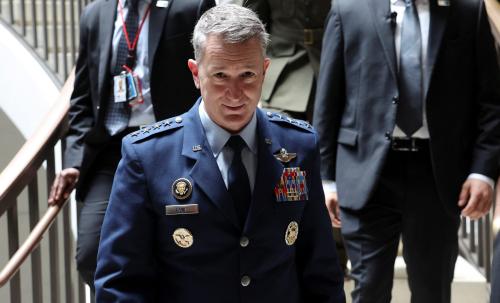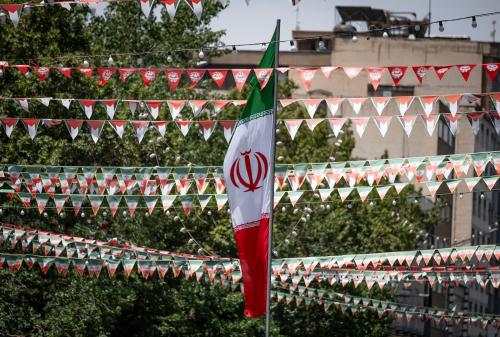Defense Secretary Robert Gates warned on Sunday about a national rush to judgment that the Afghanistan war is somehow failing and that the overall narrative about the war has become too negative. That was practically an era ago regarding Afghanistan, but Gates is still right. With the drama over Wednesday’s change of command receding, it is time to refocus on policy.
Several recent critiques paint only part of the picture, and they are often more wrong than right unless they are presented with greater nuance. Consider:
1. The “Kandahar offensive” is delayed. This complaint is strange: The U.S. troop buildup remains slightly ahead of schedule (95,000 soldiers are in Afghanistan, an increase of nearly 30,000 this year), and a major offensive in the classic sense was never promised in Kandahar. Some tactical operations there may be rescheduled this summer as U.S. reinforcements arrive — but there is no fundamental deviation from the plan, which is to create a “rising tide of security” in Gen. Stanley McChrystal’s still-relevant words.
2. Marja is a mess. The U.S. military erred in raising expectations about its big February operation in Marja, a midsize town in Helmand province where violence remains too high and Afghan governance too weak. But the trend in Helmand, where we have added a number of forces since 2009, is encouraging. Even Marja is slowly progressing. The military needs to do a better job documenting this progress. The province is in better shape than a year ago in terms of the return of commerce and agriculture and the reduction in violence against citizens.
3. There aren’t enough trainers for Afghan security forces. Our allies have not quite met their promises, or our expectations, for additional trainers. But allies have deployed more than 5,000 additional combat troops this year, exceeding the pace expected. The number of U.S. trainers has risen, and the number of Afghan officers graduating from training has more than doubled since last year. Growth trajectories for the Afghan army and police remain on schedule. Perhaps most important, nearly 85 percent of Afghan army units are “partnered” with coalition units — meaning that they plan, patrol, train and fight together. This is one of Gen. McChrystal’s many positive legacies. In southern and eastern Afghanistan last month I saw many signs of the Afghan army’s willingness to fight. The number of key districts where security conditions are at least tolerable, if not yet good, is up modestly.
4. Directives to restrict the use of firepower when civilians may be present increase risk to our troops. George F. Will has raised this concern [“Futility in Afghanistan,” June 20]; the infamous Rolling Stone article did as well, quoting troops in the field. But evidence suggests it’s not true. Roadside bombs, against which firepower is tactically irrelevant, overwhelmingly remain the most frequent cause of casualties to coalition troops. The percent of casualties from firefights is up, but modestly — and in any event McChrystal favored allowing troops in danger to call in supporting firepower. Meanwhile, the policies have reduced civilian casualties from coalition forces, an important step toward winning greater support from Afghans.
5. Firing two cabinet ministers reflects poorly on the Afghan president. The dismissals of Interior Minister Hanif Atmar and national security/intelligence director Amrullah Saleh were regrettable on balance. But there were mitigating circumstances; for example, Saleh’s hard-line anti-Taliban views conflicted with President Hamid Karzai’s hope of enticing some insurgents to negotiate.
6. Karzai is too anxious to cut a deal with the enemy. Some wonder if Karzai’s May peace conference, or jirga, reflected a weakening of will to win the war. But at that jirga — which included no representatives of the Taliban or the Haqqani network, the two most lethal parts of the insurgency — Karzai made no offer to suspend the constitution, resign or expel NATO troops. He followed the jirga with a trip to Kandahar, where he asked local leaders for patience and sacrifice in the coming difficult times. Karzai’s performance is mixed, and his half brother still plays a big role in the corruption in Kandahar, but the president is not about to cut a deal with the enemy that amounts to a negotiated surrender.
7. The July 2011 “deadline” is too vague. Some worry that President Obama’s ambiguity about the timetable hurts the war effort. I opposed that deadline and the president’s lack of clarity about its meaning. But there is still a logic to the vagueness: It keeps pressure on Afghan officials to deliver, it reminds Americans that this war will not last forever and it sustains the president’s flexibility to adjust the war plan to conditions. Even relative optimists can understand why such flexibility is valuable. If the strategy is bearing fruit by next summer, the U.S. drawdown is likely to be gradual, and the president should keep saying so.
There are indeed weaknesses in U.S. strategy, including problems with the Afghan police and an inadequate plan to fight corruption. Gen. David Petraeus and military and civilian leaders should focus on these and other matters. But on balance, we have many assets and strengths in Afghanistan — and better-than-even odds of leaving behind a reasonably stable place if we persevere.
The Brookings Institution is committed to quality, independence, and impact.
We are supported by a diverse array of funders. In line with our values and policies, each Brookings publication represents the sole views of its author(s).



Commentary
Op-edReasons For Hope On Afghanistan
June 26, 2010